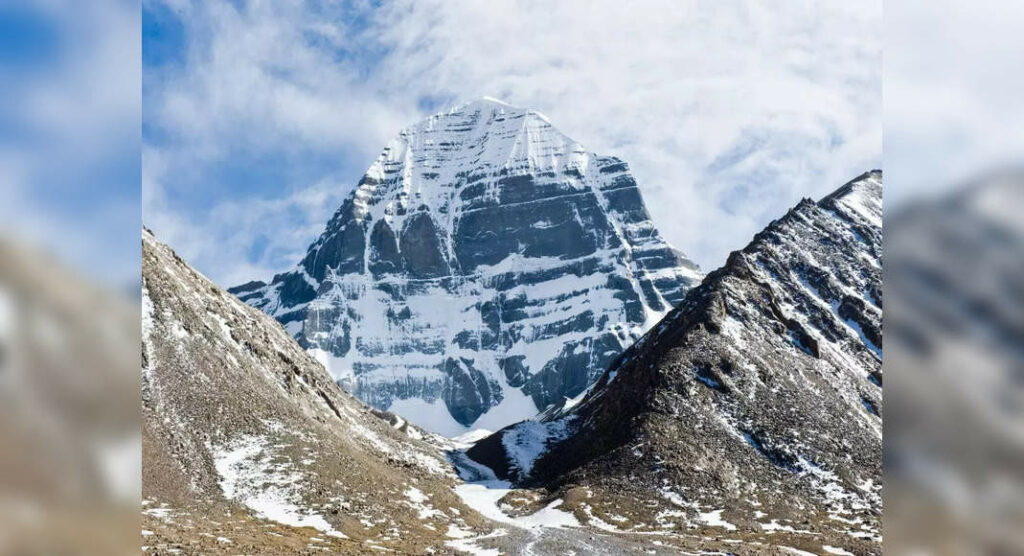As per the latest reports, the Adi Kailash pilgrimage recently commenced with the arrival of the first batch of 49 pilgrims at the Dharchula base camp, en route to Jolingkong, which offers a view of the sacred peak.
“The initial group of 49 pilgrims, comprising 32 men and 17 women from various parts of the country, reached the yatra’s base camp at Dharchula,” reported Vijay Nath Shukla, the general manager of Kumaon Mandal Vikas Nigam (KMVN).
These pilgrims are journeying towards the Shiv-Parvati temple, situated alongside a lake at an elevation of 18,500 ft in Jolingkong, from where the sacred Adi Kailash peak is visible.
“On the occasion of the temple’s opening for the year, over 200 devotees were present,” stated Gopal Singh Kutiyal, the chief priest of the temple.
14 most travelled countries and their single most unique attractions
FacebookTwitterPintrest
Jolingkong gained prominence in October last year when Prime Minister Narendra Modi paid homage at the lakeside temple and had a darshan of the Adi Kailash peak from there.
The Adi Kailash pilgrimage will take seven days for each batch to complete, during which the devotees will stay at camps in Pithoragarh, Dharchula, Gunji, Bundi, Chaukori, and Bhimtal, according to Dhan Singh Bisht, in-charge of the KMVN base camp.
The pilgrims will depart for New Delhi on the eighth day. So far, over 500 pilgrims from across the country have booked for the yatra this year, added Bisht.
Read more: MP’s first-ever city museum to welcome visitors from June 6; know why it’s a must-visit
“The current phase of the Adi Kailash yatra will continue through May and June. It will remain closed during the monsoon months of July and August and will resume from September to November,” he elaborated.
As reported earlier, the Uttarakhand Tourism Development Board (UTDB) launched India’s inaugural helicopter yatra for Adi Kailash and Om Parvat. This pioneering initiative breaks through the limitations posed by season and terrain, and will enable a broader range of devotees to access these revered pilgrimage sites for a greater number of days throughout the year.
Why is this yatra significant?
Mount Kailash is renowned not only among devotees of Hinduism, Jainism, and Buddhism but also among seekers of peace and adventure. Rising to a height of 19,500 ft, this diamond-shaped mountain is nestled in the remote Himalayan ranges of the Tibetan Autonomous Region, standing as one of the world’s most spiritually significant peaks. Regarded as the Axis Mundi, the center of the Earth, it is believed to be the stairway to Heaven and the dwelling place of numerous deities.
Read more: Africa’s top 5 national parks to witness magnificent beasts
According to Hindu tradition, Mount Kailash is the abode of the supreme God Shiva and Goddess Parvati. In Jainism, it is known as Ashtapad and is revered as the birthplace of Jainism, where Lord Adinath, the first Tirthankara, attained enlightenment.
The circumambulation, also known as parikrama or kora, of Mount Kailash is believed to cleanse sins and purify the soul. Devotees, including Hindus, Jains, and trekkers alike, undertake the ritual in a clockwise direction, covering a total distance of 52 km around the sacred mountain.
>>> Read full article>>>
Copyright for syndicated content belongs to the linked Source : Time Of India Travel – https://timesofindia.indiatimes.com/travel/travel-news/adi-kailash-yatra-begins-know-about-its-historical-and-mythological-significance/articleshow/110297652.cms
